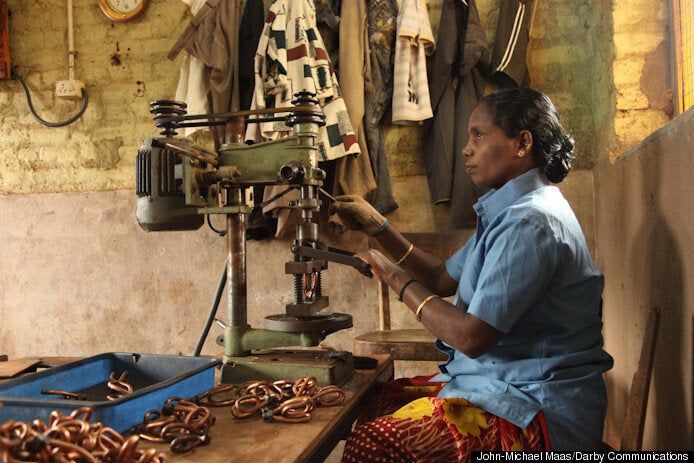
Economists are no better than book-keepers. They often dress up figures to create an illusion of growth. This year's economic growth figures In India have been very cleverly fudged to create a mirage.
It happened earlier in 2003-04. After a bad drought year of 2002, economists wrongly computed normal foodgrain production in 2003 as growth, in return jacking up the economic growth figures. Excited, the ruling NDA Coalition went to elections in 2004 riding the mirage of 'shining India'. The rest is history.
Once again, Economic Survey 2011 talks of robust growth and steady fiscal consolidation as the hallmark of the Indian economy. After all, with a growth of 5.4 per cent for agriculture and the allied sector on the back of the increase in foodgrain production this year, country's GDP has been worked out at 8.6 per cent.
I see jubilation all around. Business CEOs, bank heads and the policy makers are all excited. If you have seen the budget discussion -- both prior and after the budget was presented on Feb 28 -- you would have noticed that none of the economists have questioned the veracity of the claim. That is what worries me.
Now let us look at what has been claimed. The GDP in 2010-11 has been estimated at 8.6 per cent. Given the buoyancy in agriculture, and hoping that the monsoon would be normal this year, the government estimates that GDP in 2011-12 would grow at 9 per cent. And as many economic writers have explained the impressive economic growth is because of a resounding performance of the farm sector.
This brings me to the question whether agriculture has really grown? Since the 8.6 per cent growth the country has achieved in 2010-11 hinges on the robust performance of agriculture or as some analyst say on the manner in which agriculture has rebound, it is important to find out how true are the claims?
Agriculture growth in 2010-11 has been estimated at 5.4 per cent. This is primarily because foodgrain production for the current year is anticipated at 232.07 million tonnes. A year earlier, in 2009-10, agriculture production had fallen to 218.11 million tonnes on account of a widespread drought in 2009, a drop of 16 million tonnes from the previous year's record harvest of 233.88 million tonnes. In other words, it is the 'quantum jump' in foodgrain production, from 218.11 million tonnes in 2009-10 to 232.07 million tonnes in 2010-11, that has driven the farm growth.
Of course we know that foodgrain production is not the only criteria when we work out farm growth but it remains the predominant factor. But is India justified in computing the increase in foodgrain production in 2010-11 as the reason for 5.4 per cent growth in agriculture?
Let us look at some of the production figures. In the 2009-10 crop year, farm sector growth was only 0.4 per cent due to severe drought in 2009, which hit almost half the country, reducing foodgrain production by 16 million tonnes, says the Economic Survey 2010. In 2010-11, rainfall was normal, and so the country harvested 232.07 million tonnes.
Interestingly, while the nation rejoices at the recovery in foodgrain production this year, the fact remains that the anticipated food production for 2010-11 at 232.07 million tonnes actually is lower than what was achieved in 2008-09 by roughly 2 million tonnes. Foodgrain production in 2008-09 was 233.88 million tonnes, and in 2010-11 it is 232.07 million tonnes. The country has therefore not even achieved the production recorded two years earlier, and yet we are mistaking it for growth.
I don't understand how can the fluctuation in foodgrain production resulting from weather aberration be construed as growth? More importantly, why are the distinguished economists, and there are a dime a dozen of them, point out this serious flaw in the estimates of farm growth?
Now, consider this. Assume that the 2009 drought had not happened. With the monsoon behaving normally, foodgrain production would have hovered around 232 to 234 million tonnes. If the foodgrain production had remained around twhat was achieved in 2008-09, this year's foodgrain production would not have shown a quantum jump of 14 million tonnes. Under the best of conditions, India could have claimed an increase in foodgrain production by say 2-3 million tonnes.
If the foodgrain production last year had remained at 230 million tonnes or more, the agriculture growth this year would not have been 5.4 per cent but somewhere in the range of 0.5 to 1 per cent. If the farm growth rate had remained at 1 or a maximum of even 2 per cent, the country's GDP would have been around 6 per cent.
The GDP estimates for 2010-11 therefore are fake.
As I said earlier, mere fluctuations in foodgrain production is not growth. In agriculture, it is wrong to compute growth based on annual production figures (now it is being done on a quarterly basis). Growth in foodgrain productions has to be estimated on a long-term basis, in any case not for a period less than an average of 5 years, to know whether there has truly been any growth or not.